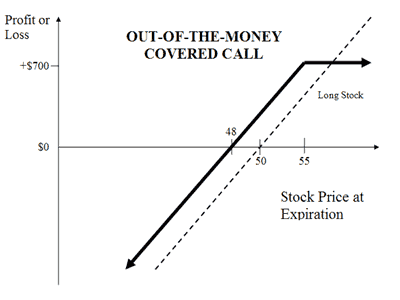Published on: 03/24/2021 • 6 min read
During this Time of Market Volatility, Is It Time to Consider Covered Calls?


Executive Summary:
In 2021, the stock market has continued its rally from 2020, but the volatility has been present, and the “winners” have rotated from the tech stocks to value sectors. One sector hit hard during COVID-19 was the oil and gas sector (we know it well in Houston). Kevin Lenox and I wrote an article on Exxon getting “delisted” from the Dow (The Hits Keep Coming…Exxon Gets Booted from the Dow). We also talked about it on the Money Hour radio show, and Kevin updated that outlook on the Money Hour in a March 2021 show.
In that article, we talked about many considerations, including some strategies (especially on Concentrated Stock Positions) to hedge or enhance your stock portfolio.
With all this in mind, we have received many calls from clients, especially those in the oil sector, asking whether they should consider Covered Calls to hedge for additional income or as an exit strategy to pick “price targets” to sell their stock. With that, Kevin wanted to share a primer on writing covered calls. A covered call is a widely used options strategy for investors who want equity-like expected returns, lower portfolio volatility and enhanced income. While many investors find these factors appealing, a few crucial factors need to be considered.
What is a Covered Call?
A covered call strategy involves selling a “call” option against a current stock or other security owned in your portfolio. When you sell a call option, you are obligated to sell your shares to the buyer at a set price, known as the strike price, on or before the expiration date of the options contract. As compensation for the option buyer’s ability to call the stock from you in accordance with the contract, you receive an upfront premium from the buyer, thus generating portfolio income.
Selling a call option is selling volatility, so a call with higher implied (expected) stock volatility results in a higher premium received by the investor. Therefore, the ideal situation for this strategy is when the implied volatility is moderately elevated and when the underlying stock is either trading in a narrow range or appreciating slowly. The combination of these factors is most conducive to both retaining your stock and the option premium.
Example of a Covered Call
If you recently bought 100 shares of Exxon at $50.00 per share, you could potentially sell one call option (one contract for every 100 shares) for $1.00 with an out-of-the-money $60 strike price expiring in two months. If the stock price remains below $60 for two months, then your return is enhanced by 1.82% since the call expires worthless. Also, your breakeven point is now $49.00.
However, if the stock price moves above the strike price, then your profit is capped at $61.00. In this case, you can either let the call be assigned and deliver the stock or repurchase the call at a loss to keep the stock. If your call option is assigned, then your return is 22%. The premise of either collecting premium or collecting premium and selling at a profit makes the covered call strategy so appealing to many investors. That said, the stock has appreciated by more than 40% over the past few months, so meaningful profits can be left on the table while trying to increase portfolio income.
No Free Lunch in Writing Covered Calls
The necessary research and analysis in evaluating when and how to implement a successful covered call strategy is overly simplified in too many cases. In practice, Kevin most often sees investors trying to perpetually roll covered call transactions to generate portfolio income without focusing on the fundamentals of the underlying company, sector outlook, key event risks or the level of the implied volatility of option contracts.
Unfortunately, the pattern described above is partly driven by the popular myth espoused by marketers that about 80% of options expire worthless. This implies the potential of a consistent stream of income for investors from selling call options since only about 10% of options contracts are exercised. In fact, the majority of option trades are closed during the contract period, and it is a zero-sum game. While we agree that there are advantages to selling calls, such as the time decay of out-of-the-money options and a statistically higher probability of realizing a profit, we believe those benefits are overstated.
Negative Asymmetric Risk/Return Profile
One of the stated benefits of covered calls is the potential to reduce downside risk. Using the previous example of XOM stock, the $2 in option premium is not particularly helpful if the stock declines by 50%. In contrast, you would only realize a small profit if the stock sharply appreciated by 50%. Thus, covered call strategies have an asymmetrical risk/return profile that gives the false sense that a lower standard deviation of returns equates to reduced risk. In fact, large negative returns are more likely than large positive returns and create return profiles with negative skewness (fat left side tail risk) and high kurtosis (more outlier returns). This results primarily from the capped upside price appreciation, which distorts the typical interpretation of standard deviation as an appropriate measure of risk.
Tax Considerations
Profits and losses from covered calls are considered capital gains, but option income/gains are short-term capital gains (taxed at your marginal tax bracket). Gains and losses can come from the stock only, from the covered call only or from a combination of the two. A gain on a stock is realized when it is sold at a higher net price than that which it was purchased. A loss on a stock is realized when the net sale price is lower than the net purchase price. If you have held the underlying stock for more than 12 months, any sale of that stock will be long-term capital gains which can be taxed anywhere from 0% to 23.8%, depending on your personal taxable income.
A loss on a covered call is realized when repurchased at a higher net price than the net price at which it sold. If a covered call is assigned, then the entire net profit or net loss is determined by the stock’s net purchase price and net sale price, as discussed above.
Conclusion
While covered calls have gained popularity in this era of low-interest rates, the continuing Federal Reserve policies of suppressing rates have also helped reduce market volatility. As a result, lower levels of implied volatility have lessened the opportunities to sell attractively priced options. Bottom line, it can create portfolio income via the option premium, but that upside is very limited. Selectively writing occasional covered calls based on careful research and valuation to generate portfolio income or when a stock is approaching your target price is a better way to manage the risk/reward profile of writing covered calls. However, perpetually writing calls on a stock in the quest for income can often be like picking up nickels in front of a steamroller when the stock makes a significant move in either direction.
A covered call is not a “risk-free” strategy, and it requires more research and analysis than meets the eye. Most investors would likely have a better outcome by hiring an experienced advisor to understand this strategy better and its impact on their investment portfolio and overall financial plan.
Please read important disclosures here
Get Avidian's free market report in your inbox

Schedule a conversation
Curious about where you stand today? Schedule a meeting with our team and put your portfolio to the test.*